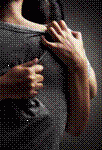 Much of a tree is hidden below the ground, gaining support and sustenance from the earth in ways that are generally invisible to us.
Much of a tree is hidden below the ground, gaining support and sustenance from the earth in ways that are generally invisible to us.
What sustains you, even though you don’t often think about it?
 Somehow, when we have overcome an obstacle or worked through a difficult problem, it feels as if we should arrive at the “land of milk and honey,” a place of rest and ease. But there will always be other obstacles, other mountains to climb, other problems that press forward.
Somehow, when we have overcome an obstacle or worked through a difficult problem, it feels as if we should arrive at the “land of milk and honey,” a place of rest and ease. But there will always be other obstacles, other mountains to climb, other problems that press forward.
How do you find ways to rest and renew yourself, even in the midst of the journey?
 Today, Yom Kippur, Jews around the world will ask in worship for forgiveness—not for theological sins such as disbelief, but for ways in which each person and the community as a whole have failed to hold to the highest ethical standards of honesty and compassion.
Today, Yom Kippur, Jews around the world will ask in worship for forgiveness—not for theological sins such as disbelief, but for ways in which each person and the community as a whole have failed to hold to the highest ethical standards of honesty and compassion.
What would it look like to atone for the ways in which you have failed to live up to your best self?
 Is this a picture of stillness and peace, or a picture of headlong motion? What does a fisherman see looking at this river? A kayaker? A fish? You’ve probably heard the saying that you can’t step twice in the same river. But really, no two of us sees the same river, even at precisely the same moment.
Is this a picture of stillness and peace, or a picture of headlong motion? What does a fisherman see looking at this river? A kayaker? A fish? You’ve probably heard the saying that you can’t step twice in the same river. But really, no two of us sees the same river, even at precisely the same moment.
How might you see things from another’s perspective today?